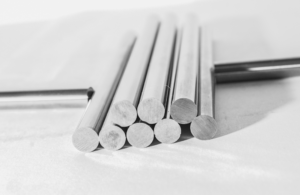Table of Contents
ToggleCarbide Rod
In modern manufacturing and industrial applications, the choice of materials can significantly affect efficiency, cost-effectiveness, and overall productivity. One material that stands out for its exceptional performance in demanding environments is carbide rod. With its robust properties and versatility, carbide rod has become the go-to solution for many industries looking to enhance their operations.
Understanding Carbide Rod
Carbide rod, often made of tungsten carbide, is known for its hardness, toughness, and resistance to wear and tear. These attributes make it particularly suitable for applications that require high durability. This quality can be crucial in industries like automotive manufacturing, aerospace, mining, and even medical devices.
For instance, in the automotive industry, manufacturers rely on carbide rods to create cutting tools that shape and size metal components. Given that vehicles are subjected to rigorous testing under varying conditions, using carbide rods helps ensure that these components retain their quality over time, effectively reducing the need for frequent replacements.
Exceptional Durability
One of the most compelling reasons to choose carbide rod for demanding industrial applications is its extraordinary durability. Carbide materials are exceptionally hard, making them ideal for cutting tools and wear parts. For example, in a mining operation, a carbide rod may be used in drill bits that penetrate through rock and earth. The wear resistance provided by the carbide ensures that drill bits maintain their sharpness over longer periods, ultimately leading to reduced downtime and lower operational costs.
Moreover, carbide rods exhibit superior resistance to thermal expansion and contraction, which prevents warping and maintains precision in machining. This is particularly important in industries that require exact tolerances. Imagine a scenario where even a millimeter off can cost thousands of dollars. By utilizing carbide rods, manufacturers safeguard their investments by ensuring that tools remain aligned and accurate throughout the machining process.
Versatile Applications
Carbide rods are not only known for their durability but also for their versatility. They can be used in a variety of applications across multiple industries. For example, in the aerospace sector, carbide rods are used to manufacture turbine blades and other engine components that operate under extreme stress conditions. The ability of carbide to withstand high temperatures while resisting wear makes it an ideal choice for this application.
In the medical industry, carbide rods are increasingly used in precise surgical tools and implantable devices. The biocompatibility of carbide allows for the creation of implants that can withstand the harsh conditions of the human body while ensuring patient safety.
Additionally, carbide rods are used for making wear-resistant parts such as bushings, valves, and nozzles in manufacturing equipment. Their reliability in high-pressure scenarios adds to the appeal of carbide rods for companies looking to optimize their production processes.
Cost-Effectiveness
When evaluating options for industrial applications, companies must also consider the economic aspect. While the initial investment in carbide rod may be higher than that of other materials, the long-term savings often outweigh the initial costs. Industries that have made the switch report fewer tool replacements and less downtime due to equipment failures.
For instance, a company in the oil and gas sector decided to replace their existing drill bits, made from traditional materials, with carbide rod alternatives. They found that not only did the carbide drill bits last three times longer, but they also allowed for faster drilling speeds, increasing overall productivity. This translated into substantial cost savings and improved project timelines.
Enhanced Performance
Choosing carbide rod for demanding industrial applications also translates into enhanced performance. Businesses recognize that the efficiency of their operations can truly set them apart from competitors. Carbide rods can significantly improve cutting speeds and feed rates, leading to faster production cycles.
Take, for example, a manufacturing firm that switched to carbide rods for their machining operations. They noticed a marked improvement in their cycle times, enabling them to take on more clients and fulfill orders faster than ever before. This strategic choice not only boosted their productivity but also enhanced their reputation in the market.
Final Thoughts
For businesses operating in manufacturing, aerospace, mining, and other demanding sectors, the decision to invest in carbide rod can be a game-changer. Its outstanding durability, versatility, cost-effectiveness, and enhanced performance create a compelling case for its use in a range of applications. As industries continue to push for greater efficiency and productivity, carbide rods stand as a reliable ally.
When considering the best materials for your industrial operations, carbide rod for demanding industrial applications should undoubtedly be at the forefront of your choices. By prioritizing quality and durability, you not only secure your operations but also foster growth and innovation in your respective fields. As we move toward an increasingly competitive landscape, the advantages offered by carbide rods will continue to play a significant role in shaping industry success stories.
